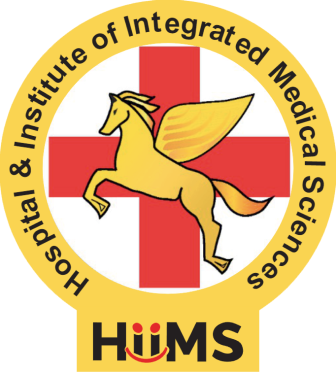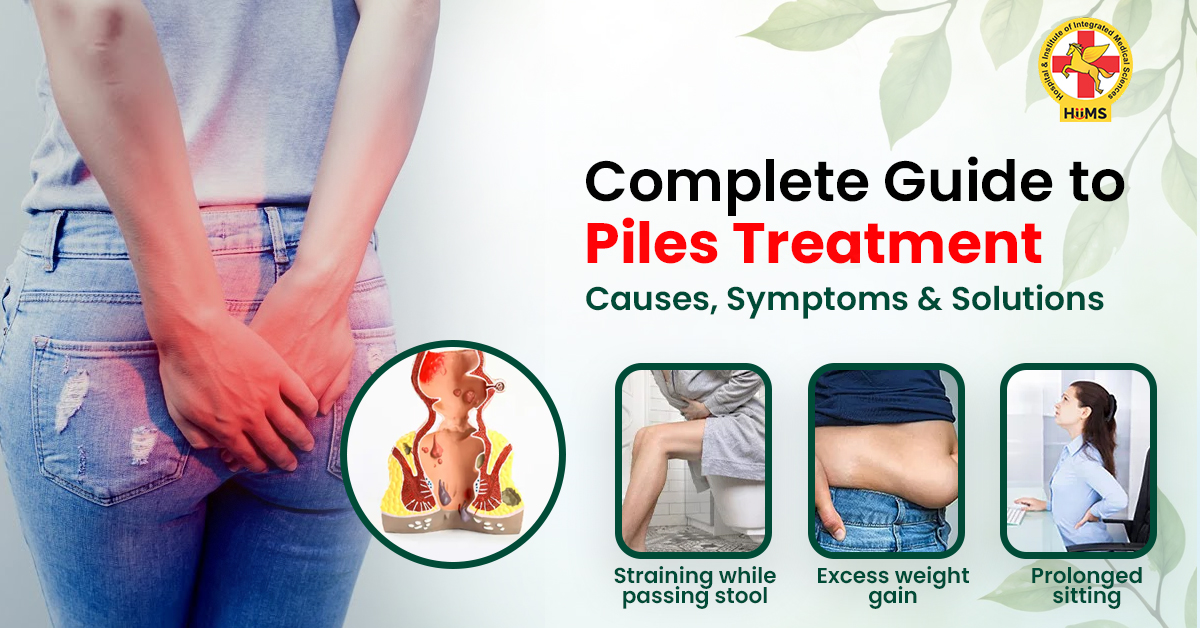It’s strange how many people quietly deal with Piles and almost pretend it isn’t happening. Piles Treatment is searched so often now that it feels like every second person is struggling but doesn’t want to say it out loud.
Hemorrhoids, or piles, affect millions—some say around 4–5% of the population at any time—but honestly, the number feels much higher when you talk to patients. It begins small, a little irritation after visiting the washroom, maybe a little blood that makes your stomach tighten for a moment, but then you ignore it. Most people do. Until it becomes routine, and suddenly it feels like the body is complaining louder than before.
This blog focuses on the details — why piles start, what signs to look for, and the different options for relief, including the Ayurvedic approach followed at Jeena Sikho HiiMS.
Understanding the piles causes – where it starts for most people
When people ask about piles causes, there isn’t one single answer. It’s usually a mix of things stacking up over months, sometimes years. Constipation is the biggest culprit—straining weakens the veins little by little. Long sitting hours don’t help either. Office chairs, long drives, work-from-home habits… all of it adds pressure.
Other triggers people often mention:
- Pregnancy, because of increased abdominal pressure
- Being overweight
- Repeated episodes of diarrhea
Eating whatever is convenient rather than whatever is healthy - Not drinking water until the body literally demands it
Some people even say, “But I have normal digestion,” and yet piles still show up. It happens. Bodies behave differently.
Piles Symptoms – the body’s early warnings
Piles Symptoms rarely burst into life suddenly. They creep in. A little sting, a burning feeling after passing stool. Itching that feels embarrassing to even mention. A tiny lump that appears only when you’re stressed or constipated.
Most patients say the same few things:
- “It burns when I use the washroom.”
- “There’s slight bleeding sometimes.”
- “I can feel a small swelling.”
- “It itches. Not always, but often.”
These warnings aren’t dramatic, but they shouldn’t be ignored.
Piles treatment without surgery – why so many prefer it
Everyone hopes for Piles treatment without surgery, mostly because the idea of surgery in such a sensitive area naturally scares people. And truthfully, early to moderate piles don’t require surgical procedures in most cases. Ayurveda, lifestyle changes, digestion support, herbal remedies—these can calm the swelling and reduce discomfort without cutting, without long recovery.
At Jeena Sikho HiiMS, many patients enter the consultation room looking tense, expecting some scary plan, and slowly relax when they realize their treatment can be gentle.
Root Causes & Symptoms
Ayurveda points to poor digestion and imbalanced Vata–Pitta as the primary reasons.
Modern life adds the rest:
- Rushed meals
- Zero fiber in daily food
- Sitting for hours—traffic, office, screens
- Drinking everything except water
- Chronic constipation or long-lasting diarrhea
The old and new worlds collide, and piles become more common.
Signs That Usually Appear
- Burning or pain while passing stool
- A bit of bleeding
- A small lump
- Mucus discharge
- Irritation or itching that disrupts sleep
These are early alerts. Listening early saves trouble.
Ayurvedic Principles Behind the Treatment
Ayurveda sees piles differently—not only as a physical swelling but as a sign the digestive system isn’t functioning smoothly. If the intestines are backed up with toxins or stool remains dry and hard, the surrounding veins suffer.
So the treatment works on the inside first:
- clearing the gut
- balancing bowel movements
- improving digestion
- reducing inflammation
At Jeena Sikho HiiMS, doctors usually sit with patients and map out what exactly triggered their piles, because the root varies from person to person.
Treatments Offered at Jeena Sikho HiiMS
-
Basti Therapy (Medicated Enema)
A warm herbal preparation is introduced gently. It softens stool, lubricates the intestines, and often reduces discomfort within a few sessions.
-
Kshar Sutra Therapy
This is an Ayurvedic method where a medicated thread is tied to the pile mass. It helps to reduce swelling significantly.
-
Herbal Medicines & Internal Remedies
Herbs like Triphala or Haritaki are used, but combined uniquely based on the patient’s digestion and symptoms. The goal isn’t temporary relief—it’s preventing the problem from coming back.
Diet & Lifestyle Tips That Truly Help
Food Choices
- Apples, bananas, pears, berries
- Fresh greens like spinach, broccoli
- Warm water, herbal teas
- Whole grains (not the heavy stuff)
- Staying away from fried or spicy foods
Lifestyle Additions
- Short walks after meals
- Malasana for bowel ease
- Ashwini Mudra to improve circulation
- Viparita Karani for swelling
- Pavanmuktasana to reduce gas
Small habits add up.
Beyond Piles – Other Conditions We Treat
At Jeena Sikho HiiMS, piles patients often mention other long-term issues. Over time, they start consulting for those as well. The team here also works with people dealing with:
- diabetes
- liver disorders
- cancer (supportive care)
- infertility
- jaundice
- digestive and lung conditions
- hormonal issues
It helps when one hospital can look at the whole picture, not just one complaint.
Conclusion
Piles Treatment isn’t only about stopping pain. It’s about restoring comfort, improving digestion, and letting life run smoothly again. Many people quietly suffer for months, even years, but things usually improve when they take the first step.
At Jeena Sikho HiiMS, treatment is steady, supportive, and built around long-term relief rather than quick fixes. If your symptoms are lingering or returning too often, don’t ignore them. Book a consultation today as early guidance changes everything.
FAQs
- Can piles completely go away?
Early care and steady treatment often help the condition settle and stay under control. - Do all cases require surgery?
Most people manage their symptoms well with gentle, non-surgical methods when started at the right time. - Is bleeding always due to piles?
Bleeding can come from many digestive issues, so checking with a doctor gives a clearer picture. - When should I see a doctor?
A visit becomes important the moment symptoms keep returning or begin affecting daily comfort. - Will food changes help?
Simple shifts like adding fiber and hydration can noticeably ease discomfort for many individuals.

